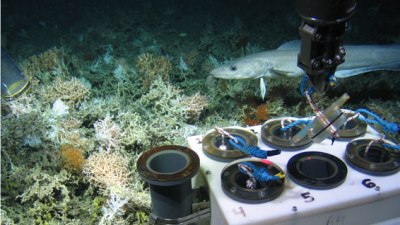Jan 25 2014
A Heriot-Watt biologist is among a team of environmental economists, policy developers and biologists who have called for formal governance to detail how to pay for the restoration and protection of deep-sea ecosystems damaged by commercial interests.

The call comes in an article in the magazine Nature co-authored by Dr. Lea-Anne Henry, a deep-sea biologist at Heriot-Watt. It says that such a move, which should be implemented by 2020, is timely. “Payment protection of this sort would be a definite game-changer for the deep sea. Our global strategy outlines the creation of a new fund, rooted in legal framework, which could be tapped into as early as 2015 for research, development and implementation of restoration in candidate protected areas.”
The article points to a key decision on an amendment to the United Nations Convention on the Law of the Sea which would add a biodiversity-conservation agreement, the outcome of which will be known in late 2015. Further to this, the UN General Assembly is deciding on whether to develop a new body to protect the deep sea outside of national jurisdictions, or whether the mandate of the International Seabed Authority (ISA) should be extended in close co-operation with the Convention on Biological Diversity which calls for the protecting and restoring 10% of the oceans by 2020.
A restoration fund of $30 million USD per annum should, the articles authors say, be established and perhaps managed by the ISA. The fund would comprise a portfolio of voluntary contributions and taxation payments of 1% of revenues from companies that undertake activities which harm the seafloor. Another alternative would be to create an international finance facility that would mobilise funds for deep-sea restoration from international capital markets by issuing long-term bonds to be repaid by donor countries over 20–30 years.